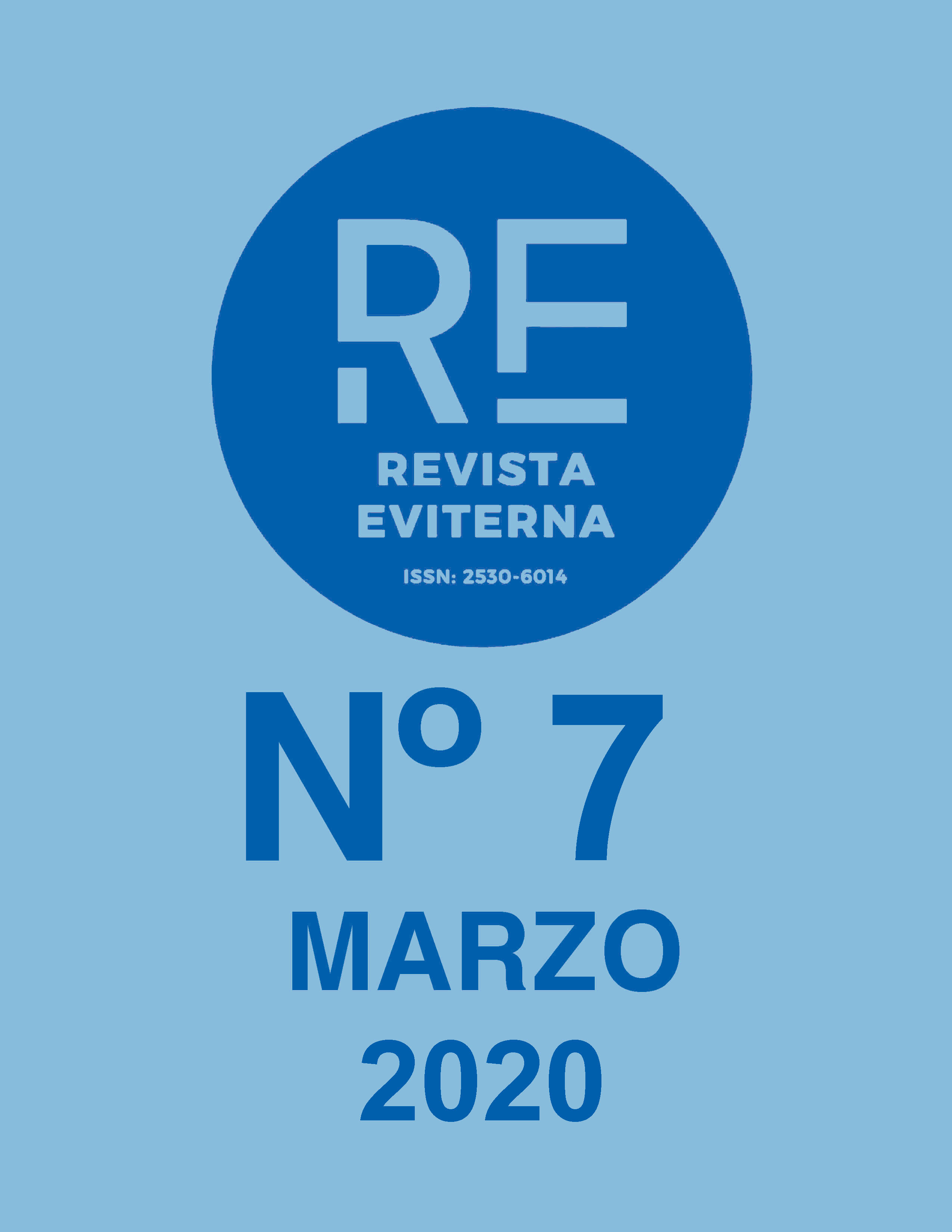Comparative study of funeral works: "The last breath" by Artur Prat (1914) and "The kiss of death" by Jaume Barba (1930)
DOI:
https://doi.org/10.24310/Eviternare.v0i7.8383Keywords:
funerary sculpture; funerary iconography; marble; death; cemeteryAbstract
We should not find it strange, that it is in the cemeteries where we can find the most remarkable artistic representations of death. The figure of the death throughout history has always been charged in multiple ways. As it has always happened in other areas, in the funeral art you can see a combination of cultures, a fusion of ideas, forms. This is caused by the many civilizations that have lived in the same territory and have coexisted for a long time. Every civilization has always tried, even continues trying, to discern the unknown. This is incomprehensible to human being, trying to represent it through imagination, with the aim of making it acceptable and to calm that fear of the End, and the point of no return.
In this article we are going to focus our attention on two sculptural manifestations of La Muerte, both located in two different cemeteries and at different times: "The Last Breath" in the Cemetery of Aveiro and "The Kiss of Death", in the Cemetery of Poble Nou, Barcelona.
Downloads
Metrics
Publication Facts
Reviewer profiles N/A
Author statements
Indexed in
-
—
- Academic society
- N/A
- Publisher
- Universidad de Málaga
References
Bulmer, Jane (2016). Higate cemetery. saved by its friends. jigsaw design & publishing.Norwich: London.
Coutinho, B., y Baptista, M. M. (2014). “Cementêrio Central de Aveiro: entre a vida e a morte”In M. M. Baptista, Europea das Nacionalidades: Mitos de origens, historia e discursos. Gràcio editor: Coimbra.
Freixa, Mireia.: “La escultura funeraria en el modernismo catalán”, Fragmentos, nº 3 Ministerio de Cultura, 1984
Hernández Latas, José. Antonio. (2003): Lágrimas de piedra: la escultura en los cementerios públicos. En Lacrra Ducay, M.C. & Giménez Navarro, C. Historia y Política a través de la Escultura Pública1820-1920. Excelentísima Diputación de Zaragoza: Zaragoza.
Villarreal Acosta, Alba R. (2013): La Representación de La Muerte en la Literatura Mexicana. Formas de su Imaginario(Tesis Doctoral). Universidad Complutense: Madrid.
Redondo Cantera, María. José(2005): Aproximación a la escultura funeraria española del siglo XIX. En Actas del II Congreso Español de Historia del Arte (1979). Comité Español de Historia del Arte: Valladolid
Archivo Distrito de Aveiro, Aveiro (ADA, Aveiro) Recuperado de: http://www.cmaveiro.pt/www/output_efile.aspx?id_file=21416&id_object=32705
Arola,R. La muerte del beso. Recuperado de: https://www.arsgravis.com/?s=la+muerte
Blanco Sánchez, C. Como sutil caricia enSalamanca al día. Recuperado de: http://salamancartvaldia.es/not/151162/como-sutil-caricia/
A.A.V.V. El beso en la historia del arte. En Revista Actticus. p 48. Recuperado de: http://revistaatticus.es/old/Revistas/Monografico_4_El _Beso.pdf
Díez Carrera, M.C. El Beso de la Muerte. Recuperado de: https://www.rutasconhistoria.es/loc/el-beso-de-la-muerte
La Hornacina. El beso de la muerte.Recuperado de: http://www.lahornacina.com/curiosidadesdifuntos16.htm
Downloads
Published
How to Cite
Issue
Section
License
All the contents published in Revista Eviterna are subject to the Creative Commons Reconocimento-NoComercia-Compartirigual 4.0 license, the full text of which can be found at <http://creativecommons.org/licenses/by-nc-sa/4.0>
They may be copied, used, disseminated, transmitted and publicly exposed, provided that:
The authorship and original source of your publication (Journal, editorial and URL of the work) are cited.
They are not used for commercial purposes.
The existence and specifications of this use license are mentioned.

Copyright is of two kinds: moral rights and patrimonial rights. Moral rights are perpetual, inalienable, inalienable, inalienable, inalienable and imprescriptible prerogatives.
In accordance with copyright legislation, Revista Eviterna recognizes and respects the moral rights of the authors, as well as the ownership of the economic right, which will be transferred to the University of Malaga for dissemination in open access.
The economic rights refer to the benefits obtained by the use or disclosure of the works. Revista Eviterna is published in open access and is exclusively authorized to carry out or authorize by any means the use, distribution, disclosure, reproduction, adaptation, translation or transformation of the work.
It is the responsibility of the authors to obtain the necessary permissions of the images that are subject to copyright.







12.png)



